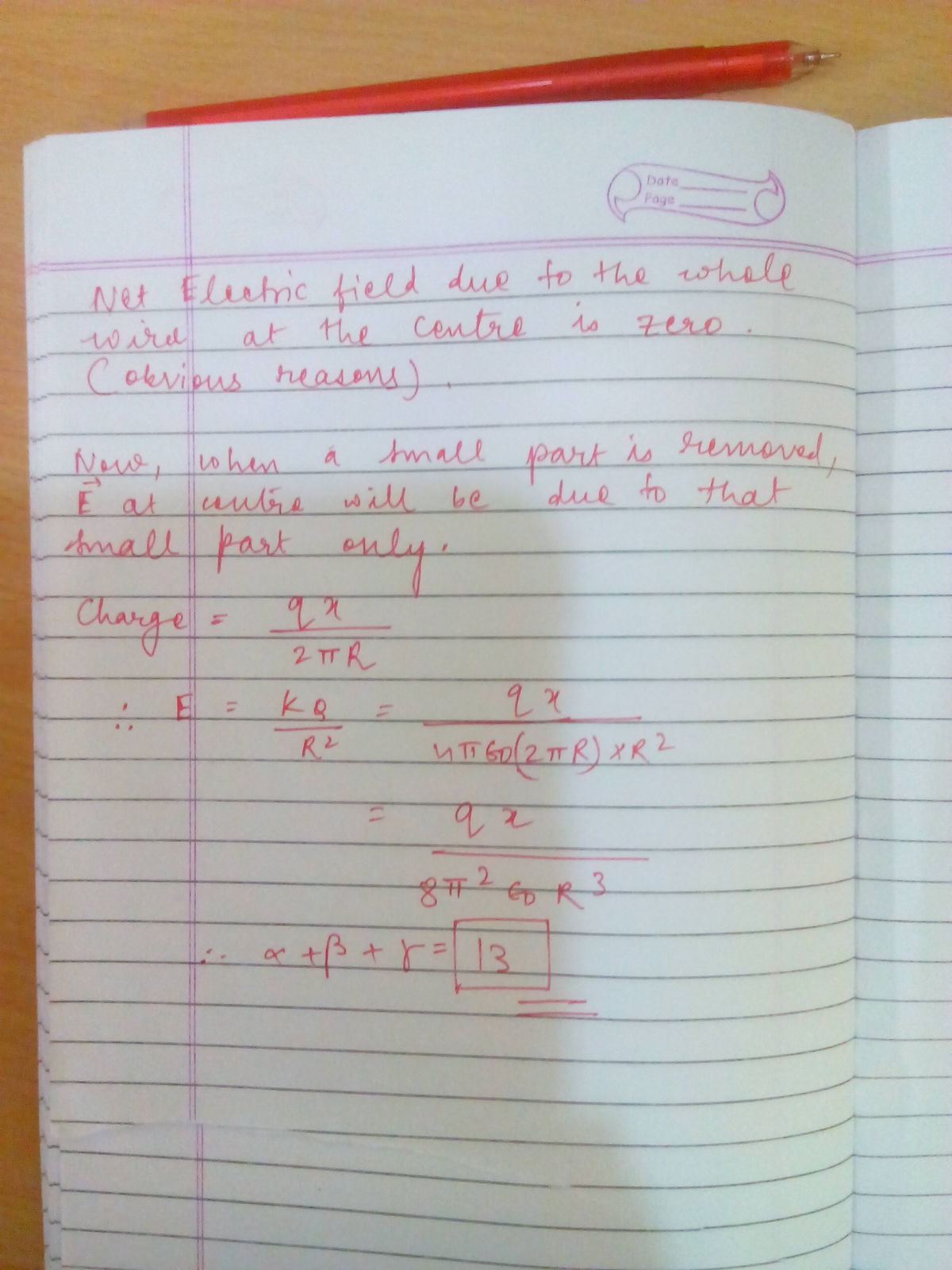It's still zero!
A circular wire loop of radius carries a total charge distributed uniformly over its length. A small length of the wire is cut off. Find the electric field at the centre due to the remaining wire.
If the answer is in the form of , find .
Assume the medium to be vacuum.
Clarification: is the permittivity of free space.
The answer is 13.
This section requires Javascript.
You are seeing this because something didn't load right. We suggest you, (a) try
refreshing the page, (b) enabling javascript if it is disabled on your browser and,
finally, (c)
loading the
non-javascript version of this page
. We're sorry about the hassle.

Let C R denote complete ring, C O represents cutout and R R denotes remaining ring. Then by principle of superposition:- E R R + E C O = E C R = 0 Since Electric field due to complete ring at centre is 0 . E R R = − E C O Now since cut out is very small it can be treated as a point charge on which charge is given by ( 2 π R q ) × x . ∴ E R R = − 4 π ε 0 R 2 2 π R q x = − 8 π 2 ε 0 R 3 q x which is the required field at centre due to remaining ring and minus sign denotes that the direction of field due to remaining ring is radially outward towards the cutout. Hence 8 + 2 + 3 = 1 3 .